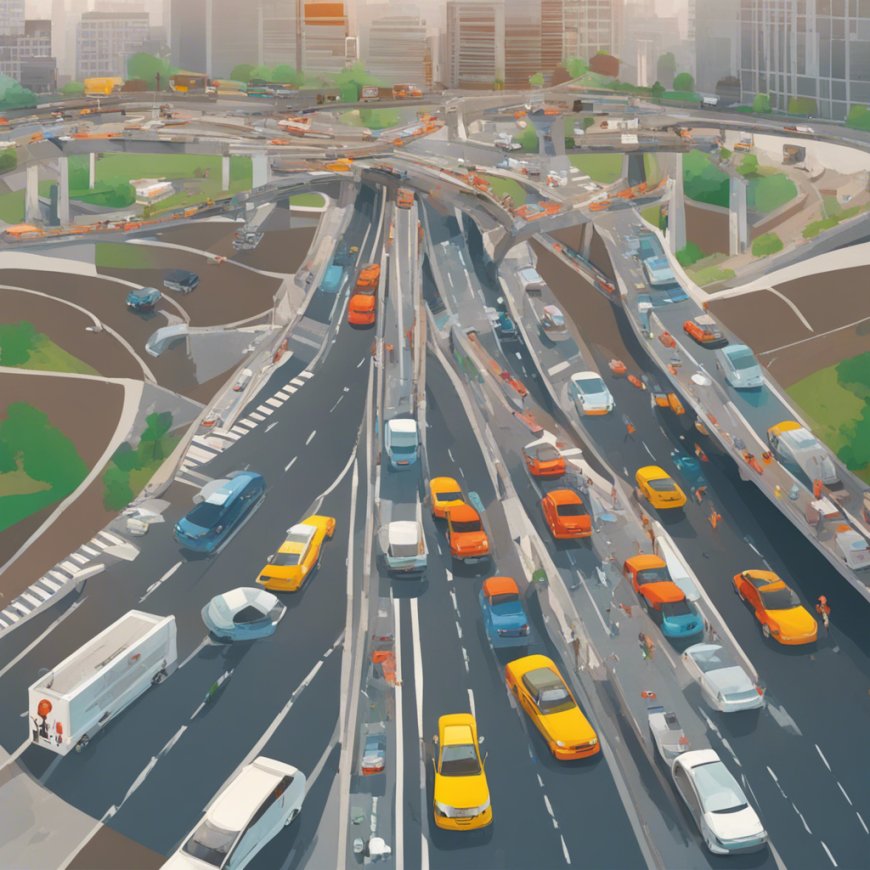Innovative Strategies to Combat Traffic Congestion and Manage Traffic Jams
Discover the latest innovations in traffic congestion and traffic jam management. Learn how cutting-edge solutions are revolutionizing the way we manage traffic and reduce congestion on our roads.

Traffic congestion is a problem that many cities face every day. The frustration of sitting in a traffic jam can affect our mood, productivity, and the environment. But there is hope. New innovations in traffic management are helping to reduce traffic congestion and improve our daily commutes.
Smart Traffic Lights
One of the exciting innovations is the use of smart traffic lights. These lights use sensors to detect traffic flow and adjust their timing accordingly. When traffic is heavy on one side, the lights stay green longer to let more cars pass. This reduces the time cars spend idling at red lights and helps keep traffic moving smoothly.
Real-Time Traffic Updates
Many of us use GPS to navigate, but real-time traffic updates take it a step further. These updates provide live information about traffic conditions. If there is a traffic jam ahead, the system suggests alternative routes. This helps drivers avoid congested areas and reduces overall traffic congestion.
Carpooling and Ride-Sharing
Encouraging carpooling and ride-sharing can significantly reduce the number of cars on the road. Apps like Uber and Lyft make it easy to share rides. Carpool lanes also incentivize people to drive together, which helps to reduce traffic jams and lower emissions.
Autonomous Vehicles
Self-driving cars are not just a futuristic dream; they are becoming a reality. Autonomous vehicles can communicate with each other to maintain steady traffic flow. They can also adjust speeds and lane positions to avoid traffic jams. This technology promises a future with fewer traffic congestions and safer roads.
Public Transportation Innovations
Improving public transportation is key to reducing traffic congestion. Innovations like high-speed trains and electric buses make public transit more efficient and attractive. When more people use public transport, there are fewer cars on the road, which helps to reduce traffic jams.
Traffic Management Centers
Many cities have established traffic management centers. These centers monitor traffic flow using cameras and sensors. They can quickly respond to incidents like accidents or road construction that cause traffic jams. By managing traffic in real-time, these centers help to keep congestion to a minimum.
Adaptive Traffic Signals
Adaptive traffic signals are another innovation in traffic management. These signals use data from sensors to adjust signal timing based on traffic conditions. If a particular route is heavily congested, the signals will change to allow more cars through, easing the traffic jam.
Congestion Pricing
Congestion pricing is a strategy where drivers pay a fee to enter busy areas during peak times. This reduces the number of cars in congested areas. Cities like London and Singapore have successfully implemented congestion pricing, leading to less traffic and improved air quality.
Road Expansion and Design
Redesigning roads to accommodate more traffic can help reduce congestion. This includes adding more lanes, creating dedicated bus lanes, and improving intersections. Better road design helps traffic flow more smoothly and reduces the chances of traffic jams.
Smart Parking Solutions
Finding parking can often cause traffic congestion. Smart parking solutions help drivers find available parking spots quickly. These systems use sensors and apps to guide drivers to open spaces, reducing the time spent circling for parking.
Conclusion
Innovation in traffic management is essential for reducing traffic congestion and improving our daily commutes. From smart traffic lights to autonomous vehicles, these innovations are making a big difference. By embracing these technologies, we can look forward to a future with fewer traffic jams and a smoother, more efficient transportation system.
What's Your Reaction?













































































































